Imagine a front yard that’s not only beautiful but also saves water, time, and effort. Sounds too good to be true? With a low maintenance xeriscape front yard, you can have it all.
Traditional lawns are thirsty, time-consuming, and often unsustainable, especially in dry climates. Xeriscaping offers a smarter, eco-friendly alternative. By using drought-tolerant plants, efficient irrigation, and creative design, you can create a stunning landscape that’s both water-wise and easy to maintain.
In this guide, we’ll walk you through 10 stunning low maintenance xeriscape front yard ideas to help you transform your outdoor space. Whether you’re in a dry region like Colorado or simply want to reduce your water usage, these tips will inspire you to create a yard that’s as practical as it is beautiful.
Table of Contents
What is Xeriscaping and Why Should You Consider It?
Xeriscaping is more than just a landscaping trend—it’s a sustainable approach to outdoor design. By focusing on water conservation, xeriscaping helps you create a yard that’s both beautiful and eco-friendly.
- Water Savings: Xeriscaping can reduce water use by 50–75%, making it ideal for dry climates or areas with water restrictions.
- Low Maintenance: Drought-tolerant plants and efficient irrigation systems mean less mowing, watering, and weeding.
- Environmental Benefits: By reducing water usage and chemical inputs, xeriscaping supports local ecosystems and conserves resources.
For example, a study by the Environmental Protection Agency (EPA) found that outdoor water use accounts for nearly 30% of household consumption. Switching to a low maintenance xeriscape front yard can significantly reduce this number.
10 Stunning Low Maintenance Xeriscape Front Yard Ideas
Ready to transform your front yard? Here are 10 creative low maintenance xeriscape front yard ideas to inspire your next project:
1. Replace Grass with Gravel or Mulch
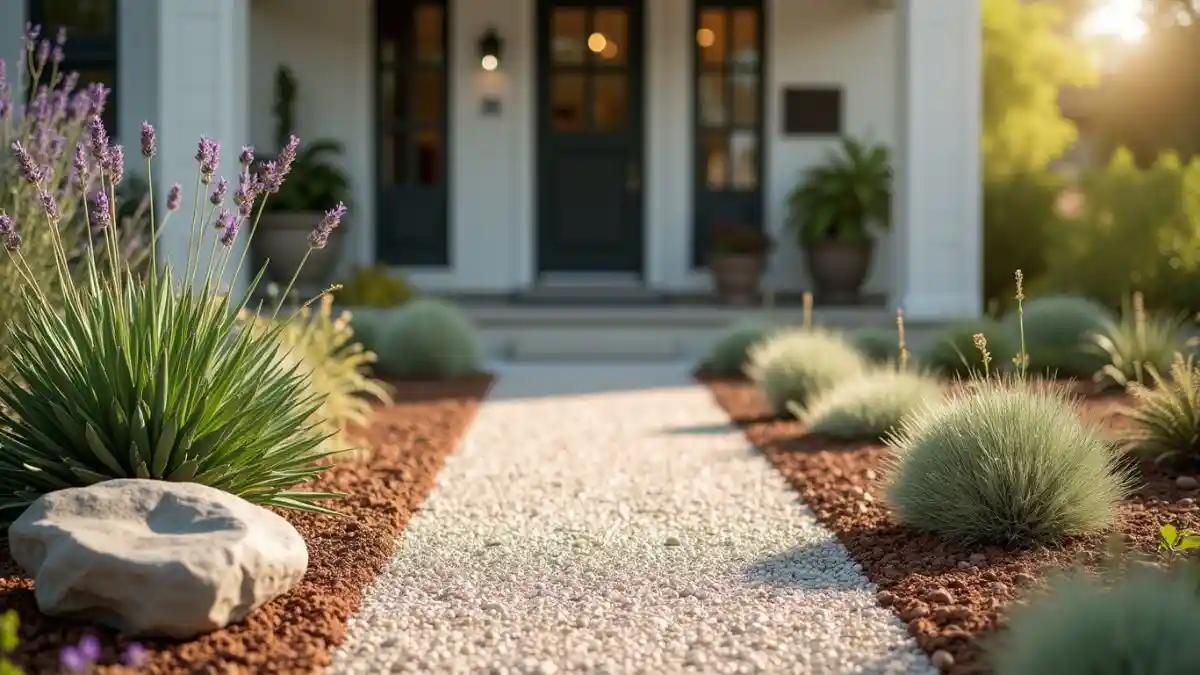
Grass is one of the thirstiest elements of a traditional lawn. Replace it with gravel or mulch for a water-wise alternative.
- How to Do It: Cover large areas with gravel or mulch, and add decorative rocks or boulders for visual interest.
- Why It Works: Gravel and mulch are low-cost, easy to maintain, and perfect for reducing water usage.
- Example: A front yard with a gravel pathway and mulch-covered flower beds creates a clean, modern look.
2. Plant Drought-Tolerant Ground Covers
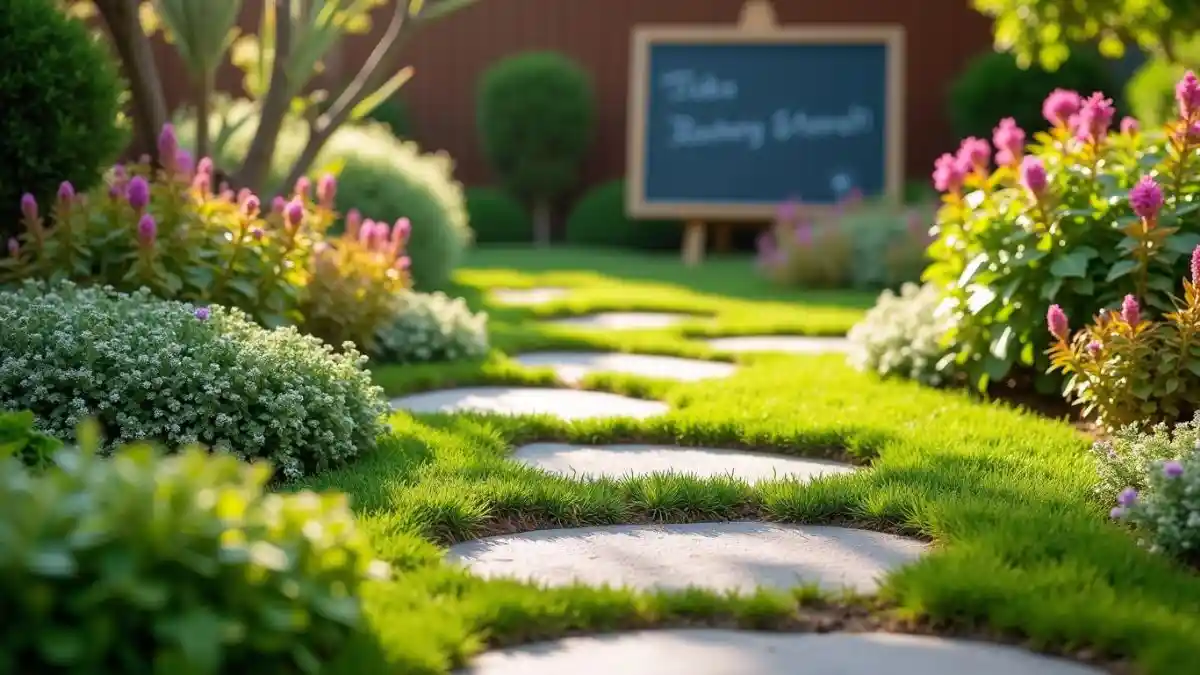
Ground covers like creeping thyme or sedum are perfect for replacing grass.
- How to Do It: Plant ground covers in sunny areas and between stepping stones.
- Why It Works: These plants require minimal water and add texture to your yard.
- Example: A front yard with a carpet of creeping thyme and colorful sedum creates a lush, low-maintenance landscape.
3. Create a Rock Garden

Rock gardens are a classic xeriscaping feature that adds natural beauty to your yard.
- How to Do It: Use rocks of varying sizes to create a natural, low-water landscape. Add succulents or cacti for a desert-inspired look.
- Why It Works: Rock gardens require almost no maintenance once established.
- Example: A front yard with a rock garden featuring agave and yucca plants creates a striking, drought-tolerant design.
4. Use Native Plants for a Local Touch
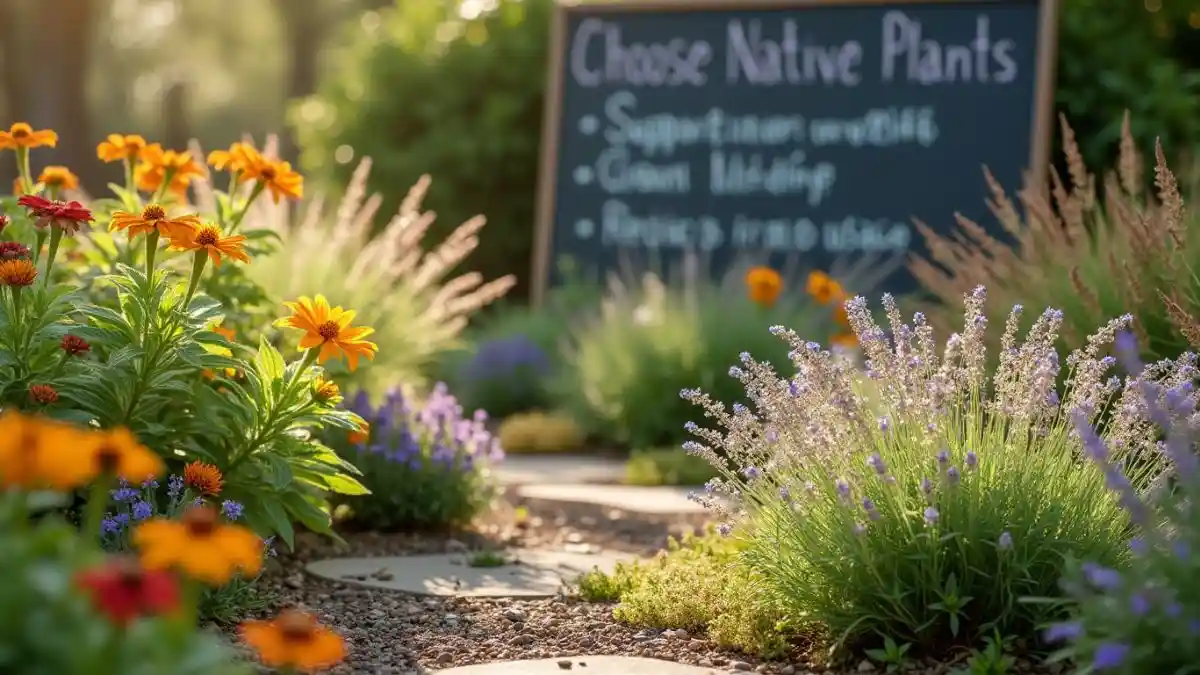
Native plants are naturally adapted to your region’s climate, making them ideal for xeriscaping.
- How to Do It: Choose plants native to your area, such as wildflowers or grasses.
- Why It Works: Native plants require less water and care than non-native species.
- Example: A front yard with native wildflowers and grasses creates a sense of place and supports local wildlife.
5. Install a Drip Irrigation System
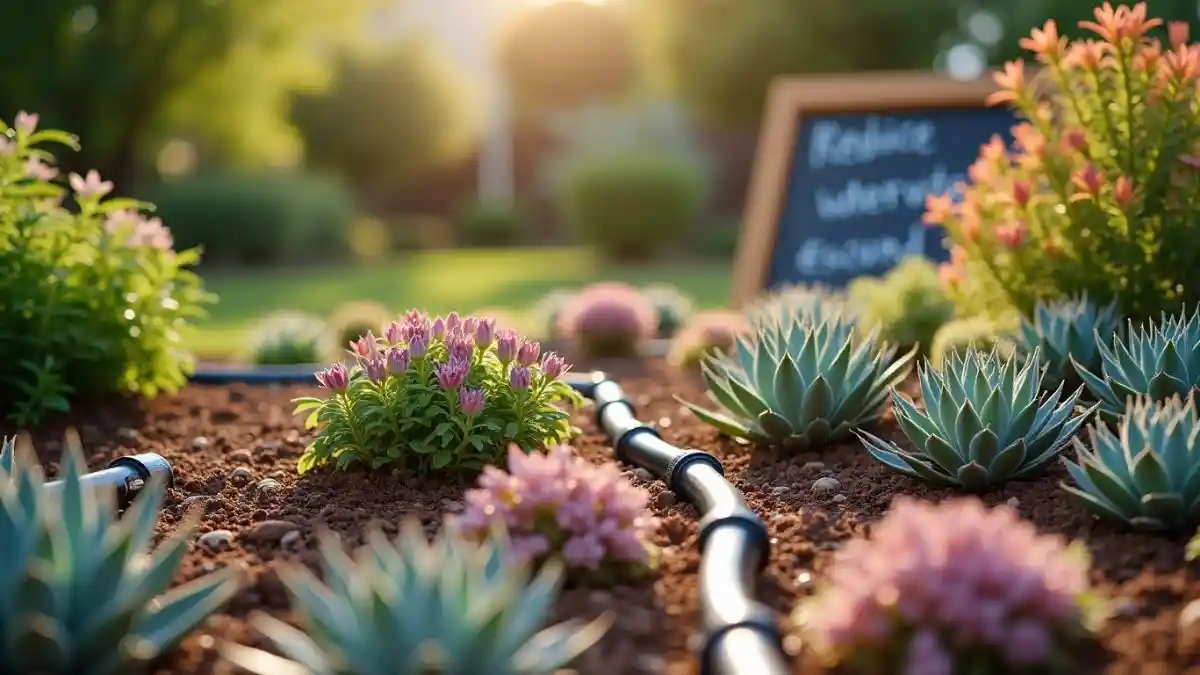
Drip irrigation is a game-changer for xeriscaping.
- How to Do It: Install a drip irrigation system to deliver water directly to plant roots.
- Why It Works: Drip irrigation reduces water waste and ensures plants get the moisture they need.
- Example: A front yard with a drip irrigation system feeding succulents and shrubs is both efficient and beautiful.
6. Add a Dry Creek Bed

Dry creek beds are both functional and decorative.
- How to Do It: Use rocks and gravel to create a winding dry creek bed.
- Why It Works: Dry creek beds improve drainage and add a natural, rustic touch to your yard.
- Example: A front yard with a dry creek bed lined with drought-tolerant plants creates a serene, low-maintenance landscape.
7. Incorporate Ornamental Grasses
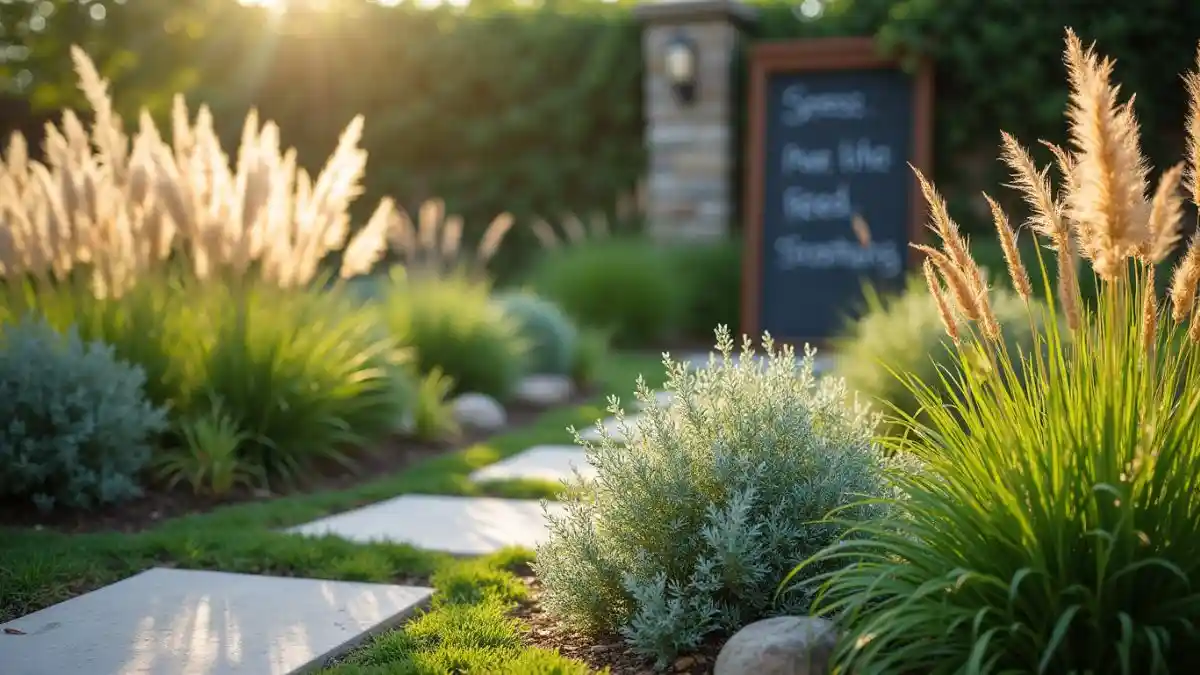
Ornamental grasses add texture and movement to your xeriscape.
- How to Do It: Use grasses like blue fescue or feather reed grass in clusters or borders.
- Why It Works: These grasses are drought-tolerant and easy to care for.
- Example: A front yard with ornamental grasses swaying in the breeze creates a dynamic, water-wise design.
8. Use Succulents for Color and Texture
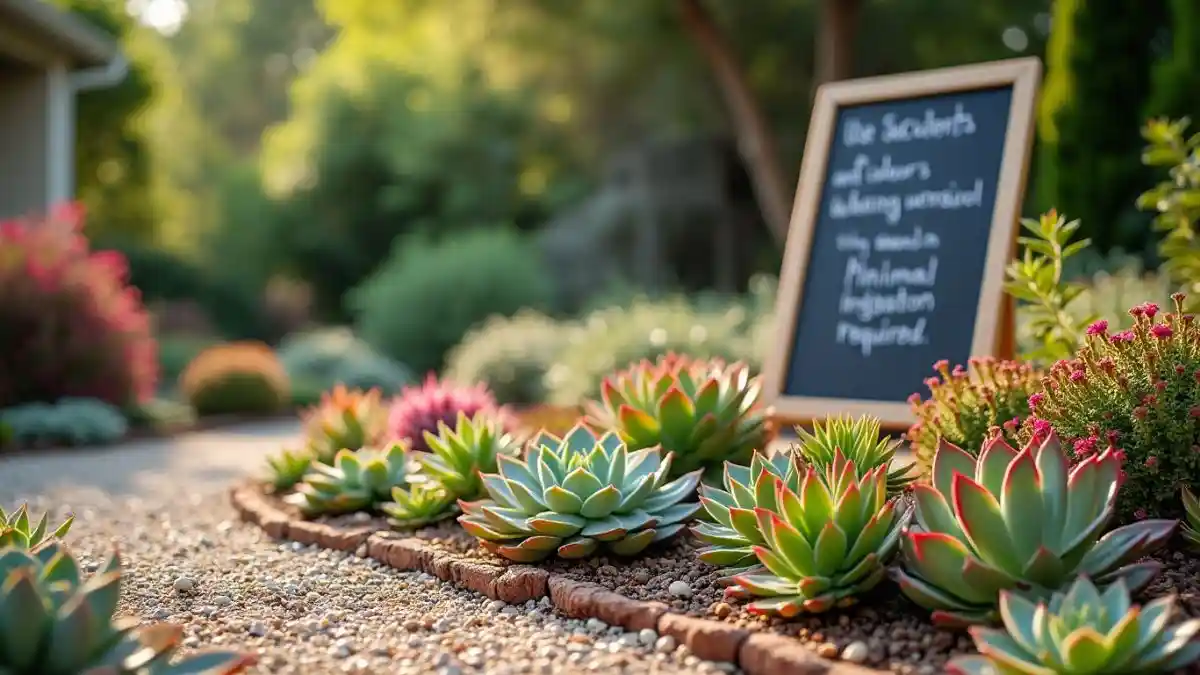
Succulents are a xeriscaping staple.
- How to Do It: Plant succulents like agave, aloe, and echeveria in sunny areas.
- Why It Works: Succulents store water in their leaves, requiring minimal irrigation.
- Example: A front yard with a variety of succulents in different sizes and colors creates a unique, low-maintenance landscape.
9. Create a Focal Point with a Sculpture or Feature
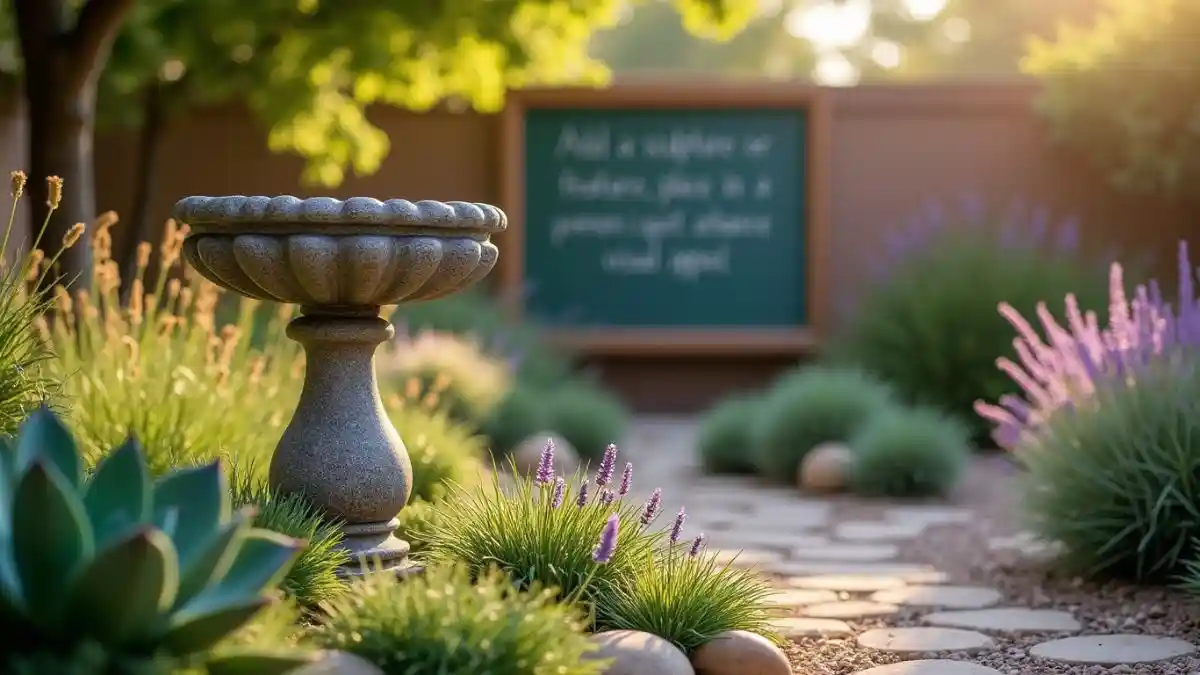
Add visual interest with a focal point like a sculpture or birdbath.
- How to Do It: Place a decorative element in a prominent spot, surrounded by drought-tolerant plants.
- Why It Works: Focal points enhance the visual appeal of your xeriscape.
- Example: A front yard with a stone sculpture surrounded by succulents and grasses creates a striking, low-maintenance design.
10. Use Hardscaping for Structure

Hardscaping elements like pathways and patios reduce the need for plants.
- How to Do It: Incorporate stone pathways, retaining walls, or a small seating area.
- Why It Works: Hardscaping adds functionality and reduces maintenance.
- Example: A front yard with a stone pathway and a small seating area creates a stylish, water-wise space.
Tips for Designing a Low Maintenance Xeriscape Front Yard
To create a successful low maintenance xeriscape front yard, follow these tips:
- Plan Your Layout: Group plants with similar water needs to maximize efficiency.
- Use Mulch: Mulch retains moisture, suppresses weeds, and adds a polished look.
- Choose the Right Plants: Select drought-tolerant plants that thrive in your climate.
How to Maintain Your Xeriscape Front Yard
Once your xeriscape is established, maintenance is minimal. Here’s how to maintain it in top condition:
- Water Deeply but Infrequently: Encourage deep root growth by watering less often but thoroughly.
- Prune as Needed: Trim plants to maintain shape and health.
- Remove Weeds and Debris: Keep your yard clean and free of unwanted growth.
Common Mistakes to Avoid
Even with xeriscaping, mistakes can happen. Avoid these pitfalls:
- Overwatering: Too much water defeats the purpose of xeriscaping.
- Choosing the Wrong Plants: Select plants suited to your climate and soil.
- Neglecting Drainage: Ensure your design allows for proper water runoff.
Conclusion
A low maintenance xeriscape front yard is more than just a landscaping choice—it’s a commitment to sustainability and smart design. By following these 10 stunning ideas, you can create a beautiful, water-wise yard that’s easy to care for and kind to the environment.
Ready to transform your front yard? Start planning your low maintenance xeriscape front yard today and enjoy the benefits of a stunning, sustainable landscape. Share your favorite xeriscape ideas in the comments below—we’d love to hear from you!
FAQ Section
- What is the best ground cover for a xeriscape front yard?
- Creeping thyme, sedum, or moss are excellent options.
- Can I use xeriscaping in a cold climate?
- Yes, choose cold-hardy drought-tolerant plants like lavender or yarrow.
- How much does it cost to xeriscape a front yard?
- Costs vary, but a basic xeriscape can start at $1,000, while larger projects can exceed $5,000.
- What’s the best way to water a xeriscape garden?
- Use a drip irrigation system for efficient, targeted watering.
- Can I xeriscape my front yard myself?
- Yes, with careful planning and research, you can create a stunning xeriscape on your own.
- What plants are best for a xeriscape front yard?
- Succulents, native grasses, and drought-tolerant perennials are ideal.
- How do I prevent weeds in a xeriscape garden?
- Use mulch and weed barriers to suppress weed growth.
- Can I add color to a xeriscape front yard?
- Yes, use flowering plants like lavender, salvia, or penstemon.
- How do I prepare my soil for xeriscaping?
- Check your soil and enhance it with organic material if necessary.
- What’s the best way to design a xeriscape front yard?
- Start with a plan, grouping plants by water needs and incorporating hardscaping.
- Can I use xeriscaping in a small front yard?
- Yes, xeriscaping is perfect for small spaces and can make them feel larger.
- How do I maintain a xeriscape front yard in winter?
- Protect sensitive plants with frost covers and prune as needed.
- Can I incorporate a lawn into a xeriscape design?
- Yes, use drought-tolerant grasses like buffalo grass or blue grama.
- What’s the best mulch for a xeriscape front yard?
- Use gravel, wood chips, or decomposed granite for moisture retention.
- How do I choose the right plants for my xeriscape front yard?
- Research native and drought-tolerant plants that thrive in your climate.
This comprehensive guide provides everything you need to know about creating a low maintenance xeriscape front yard. By following these tips and recommendations, you’ll be well on your way to designing a stunning, water-wise landscape. Happy gardening!


